5 Types of Paint Finishes and Sheens & When To Use Them Explained
My blog contains affiliate links- which means that if you click on a link and end up purchasing something, I’ll earn a small commission. You’ll never pay a penny more, and I can continue creating free content like this, so it’s a win-win!
share /
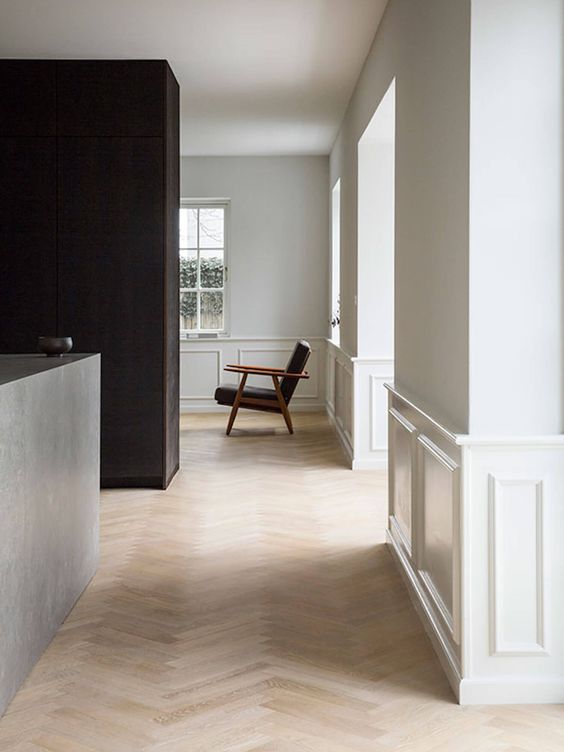
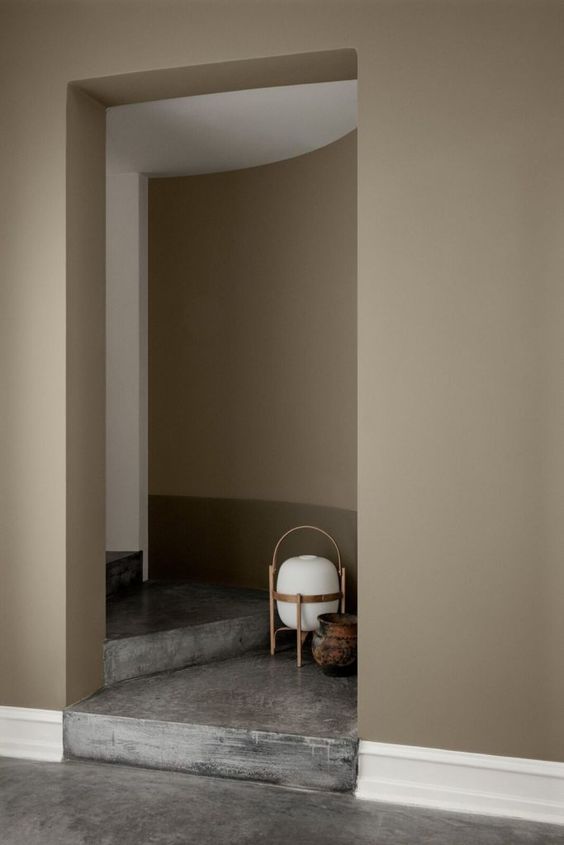
Images via Norm Architects & Residencia
There’s no arguing that painting the walls can make a huge difference in your space. It typically takes a few hours, and you can completely transform the look of your room. It’s no wonder why it’s a perfect weekend DIY!
You probably spend hours narrowing down the perfect color, bringing home samples, get all the proper gear and tools… but do you ever put thought into the finish or sheen of the paint itself?
In reality, the finish is just as important as the color and it’s something that gets overlooked all the time!
Depending on what you’re painting and the look you’re going for, each sheen looks different and durability varies. Some finishes will be easy to clean, while others will highlight every imperfection on your wall, so it’s important to know what finish and sheen to use, when, and where.
There are five different finish and sheen options to choose from when buying interior paint: matte, eggshell, satin, semi-gloss, and high-gloss.
5 Types of Paint Finishes & Sheens
- Matte & Flat
- Eggshell
- Satin
- Semi-gloss and
- High-gloss
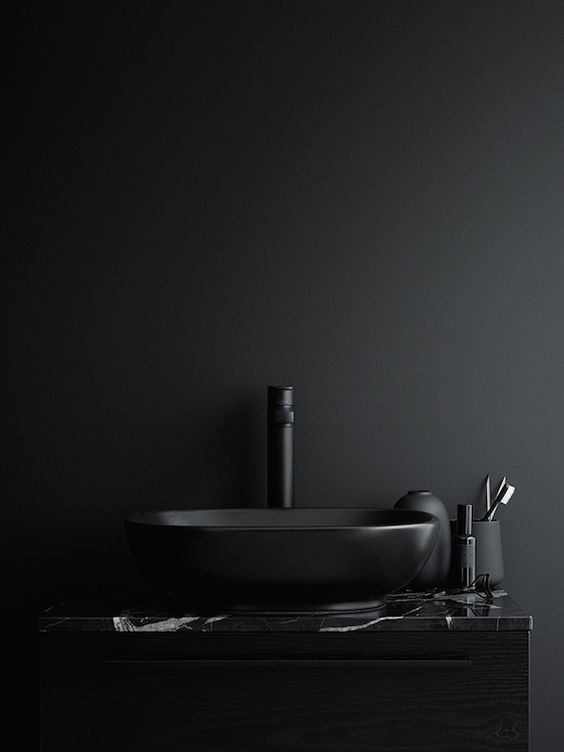
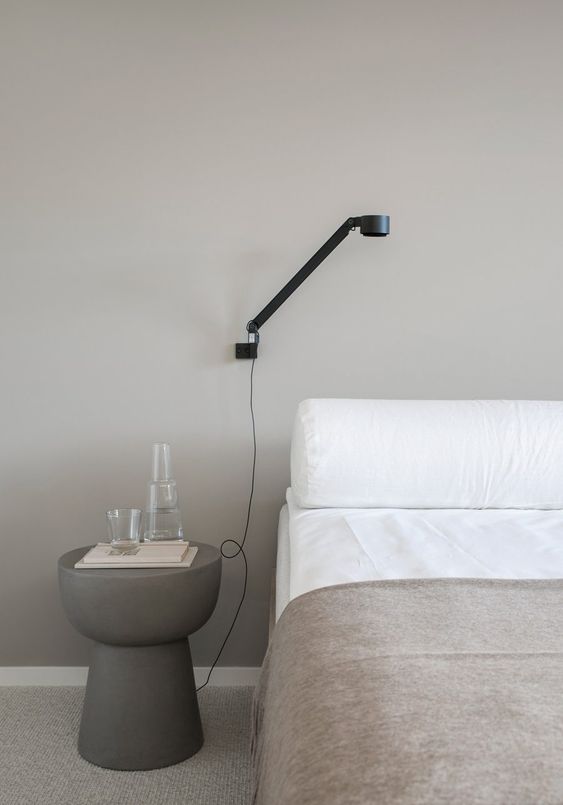
Images via Lotta Agaton & Sara Medina Lind
1. Flat & Matte Paint Finish
Flat and matte paint finishes are non-reflective and are typically good for low-traffic areas of your home. They’re ideal for surfaces with slight imperfections, but also ones that won’t get scuffed up too often, as it’s hard to clean.
If you have small children or if you are constantly moving things around in your home, then this finish probably isn’t for you. You won’t be able to get away with a damp cloth or sponge for cleanup, you’ll have to repaint the entire wall to keep it looking pristine.
Pros
- Hides imperfections well
- Good for low-traffic areas
Cons
- Difficult to clean (However, a lot of brands have a washable and scrubbable paint that comes in a matte or flat finish)
- Shows marks and stains easily
- May not hold up well in high-traffic areas
Where to use a matte or flat finish:
- Formal living rooms
- Dining rooms
- Ceilings
- Offices
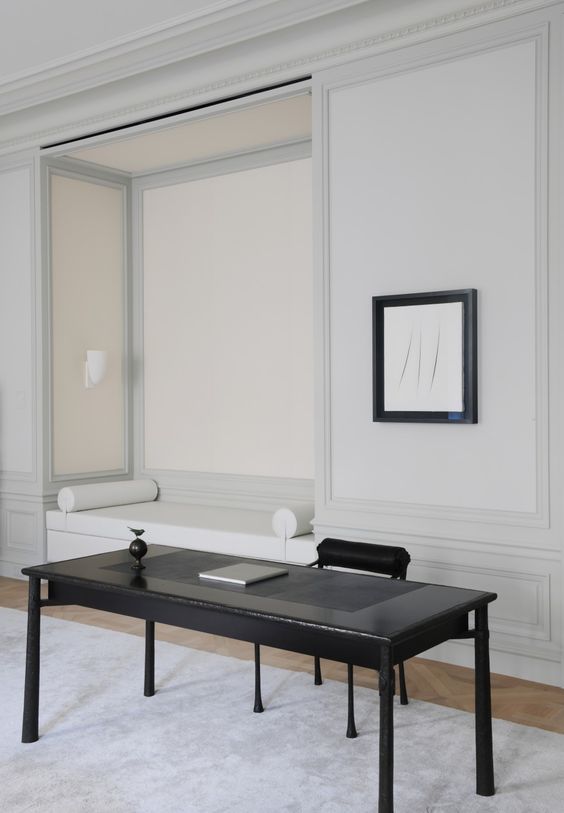
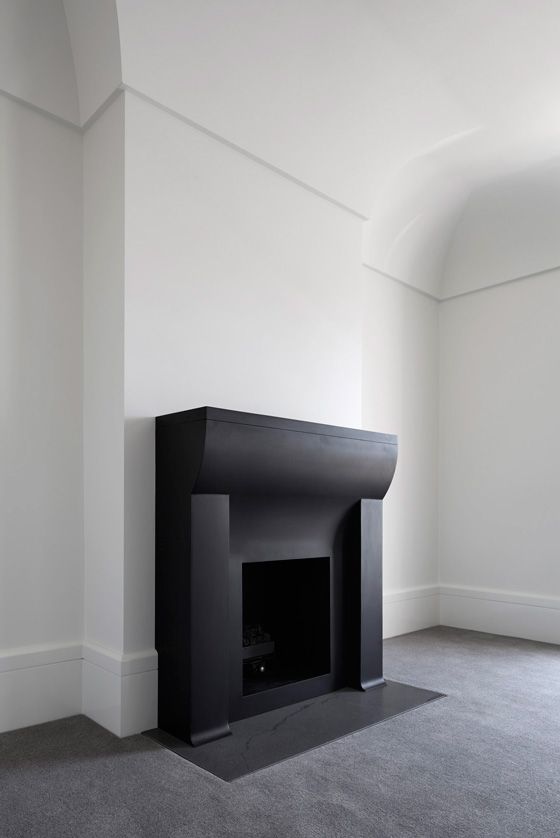
Images via Joseph Dirand & B.E. Architecture
2. Eggshell Paint Finish
An eggshell finish is usually my go-to ever since I can remember.
This low-luster sheen appears slightly velvety and soft, similar to the actual surface of an eggshell…almost like the name means something!.
It bounces light around the room ever so slightly and can resist stains and fingerprints better than a matte finish. An eggshell finish is a good option for
Pros
- Has a slight sheen that adds a subtle depth to the color
- Durable and resists stains better than flat/matte finishes
- Easier to clean than a matte or flat finish
Cons
- It can be difficult to touch up
- It may not hold up well in high-traffic areas
Where to use an Eggshell Finish:
- Family rooms
- Dining Rooms
- Home Offices
- Bedrooms
- Hallways
- Entryways
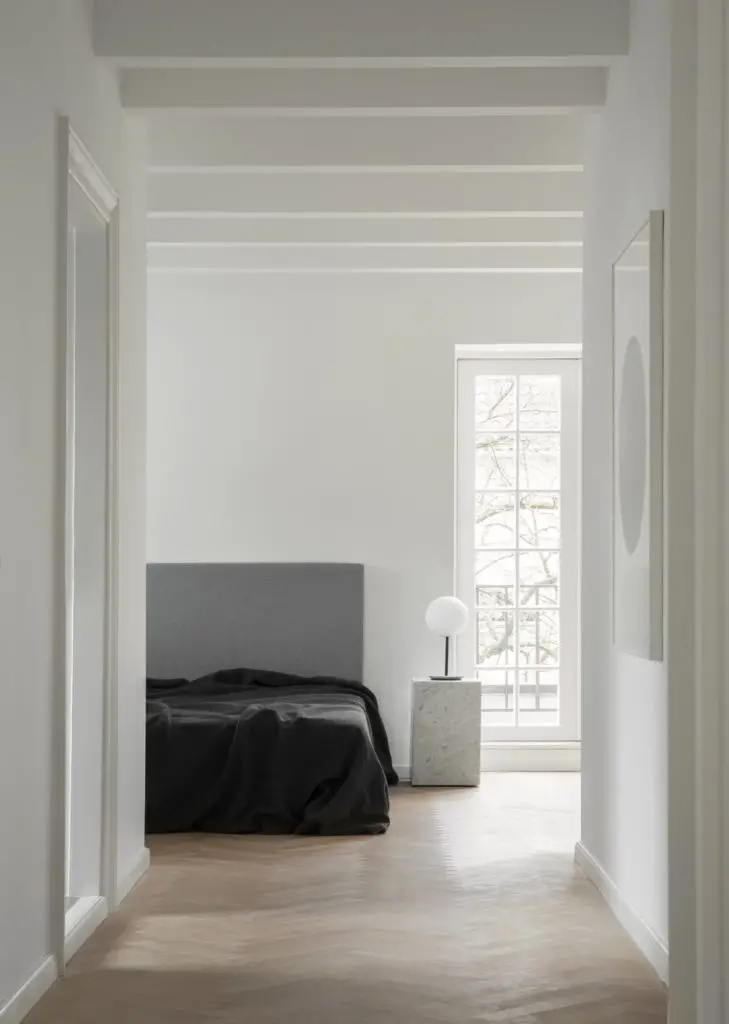
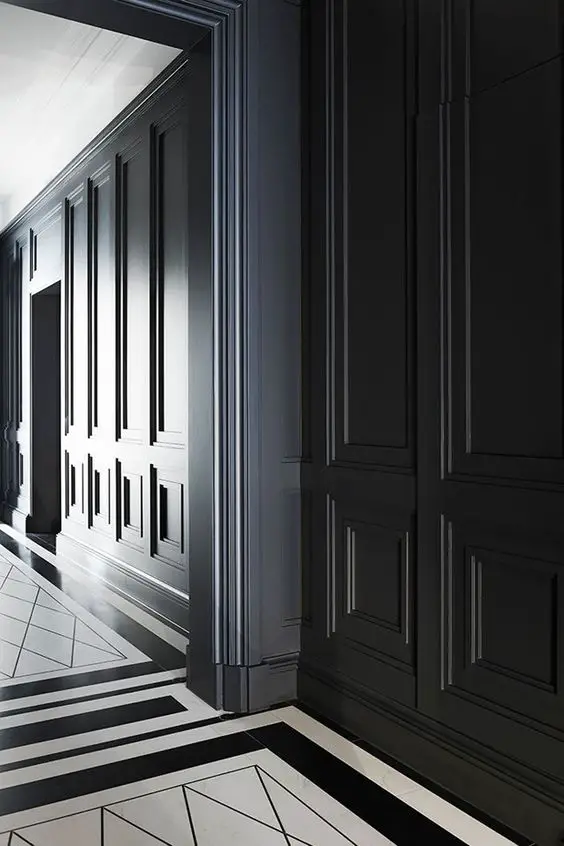
Images via Dwell Magazine & Joseph Dirand
3. Satin Paint Finish
A satin finish has a pearl-like sheen and is slightly more reflective than an eggshell finish. Since it’s more reflective, it’s also more durable to withstand dirt and grime, therefore, easier to clean. Always a plus, right?
It’s perfect for moderate to high-traffic areas like
Pros
- More durable than eggshell and flat/matte finishes
- Resists stains and moisture well
- Reflects light and creates a warm glow
Cons
- Can show brush strokes or roller marks
- May require multiple coats to achieve the desired finish
- Not suitable for very high-traffic areas
Where to use a satin finish:
- Family rooms
- Living rooms
- Kitchens
- Bathrooms
- Kids’ rooms
- Molding and millwork
- Interior doors
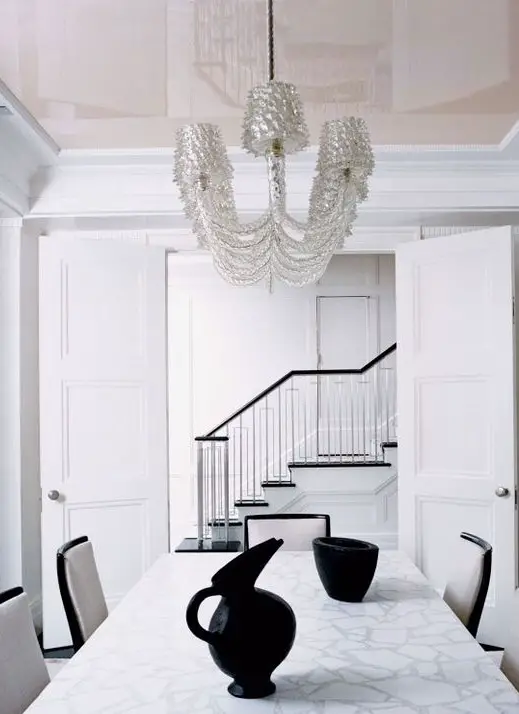
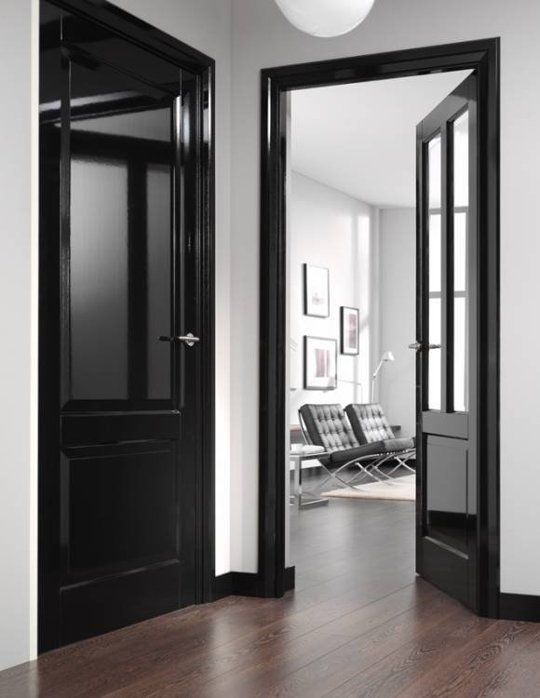
Images via MyDomaine & Deuren Centrum Noord
4. Semi-Gloss Paint Finishes
Semi-gloss paint is a paint finish that has a slightly shiny appearance, typically between 35-70% gloss level. It is more reflective than satin paint, but less reflective than high gloss paint. The finish is smooth and durable, and it is easy to clean, making it a popular choice for areas that get a lot of use or moisture, such as bathrooms, kitchens, and children’s rooms.
Semi-gloss paint is ideal for areas where a little bit of shine is desired but high gloss is not appropriate. It can highlight the architectural details in a room, such as crown molding or baseboards, and is a popular choice for doors, trim, and cabinets. It also works well in high-traffic areas, as it resists scuffs and stains better than flat or eggshell finishes.
Pros
- Very durable and easy to clean
- Creates a crisp, polished look
- Resists moisture and stains well
Cons
- Shows imperfections more than flatter finishes
- Can create a glare in certain lighting
- May require more coats to achieve the desired finish
Where to Use Semi-Gloss Paint:
- Kitchens
- Bathrooms
- Cabinetry
- Kid’s Rooms
5. High-Gloss Paint Finish & Sheen
You guessed it, both finishes are all about a sleek, glossy appearance. This finish can make a statement all on its own, even in small doses.
These shiny sheens are durable, but they are also very tricky to pull off. If you’re thinking about painting your walls with a glossy finish, you might want to think about hiring a professional because the paint will end up showing every tiny imperfection in your wall, and your painting skills….or lack thereof, like the brushstrokes. Instead of going all in on the walls, you could add accents of this high gloss finish on your baseboards and millwork, or as an accent on the ceiling.
Glossy finishes are ideal for areas that get a lot of wear and tear, like kitchens and bathrooms since it’s easy to clean and is resistant to dirt, stains, and mildew.
Pros
- Most durable and easy to clean
- Reflects light and creates a sleek, polished look
- Resists moisture and stains well
Cons
- Shows imperfections more than flatter finishes
- Can create a glare in certain lighting
- May require more coats to achieve the desired finish
Where to Use a High-Gloss Paint Finish
- Kitchens
- Bathrooms
- Molding and Millwork
- Doors
Shop My Favorite Painting Supplies on Amazon
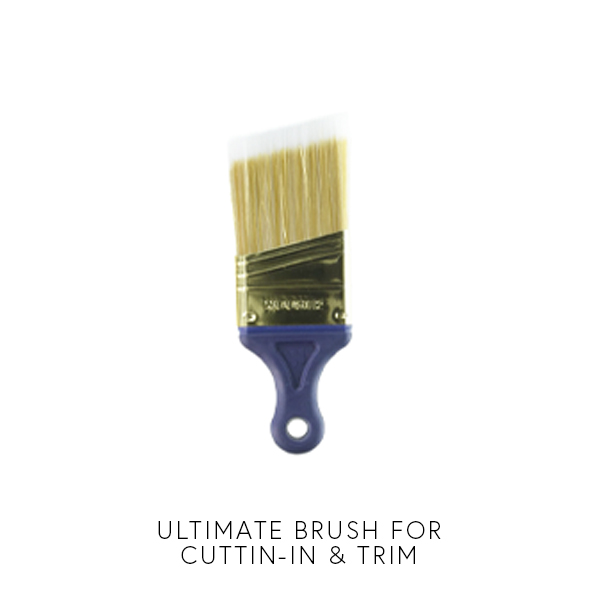
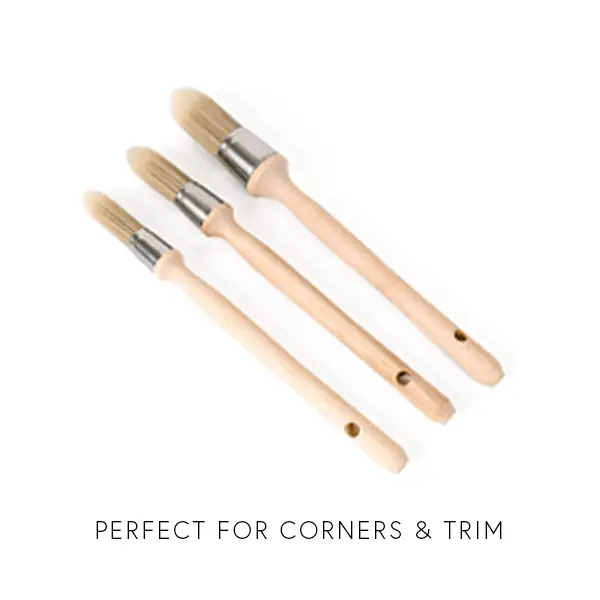
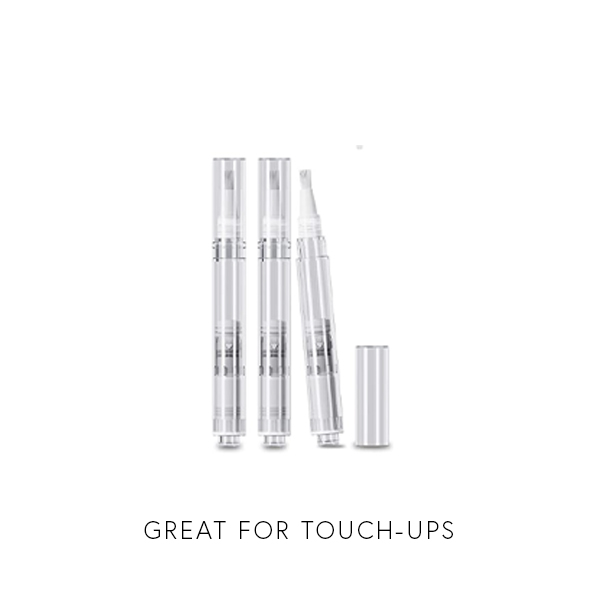
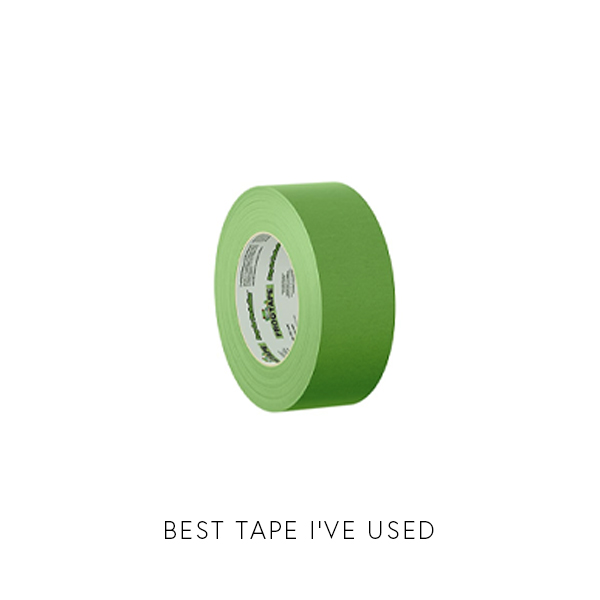
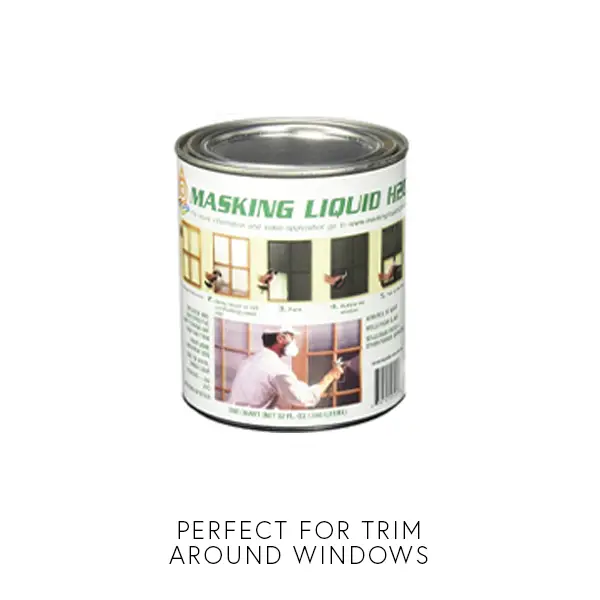
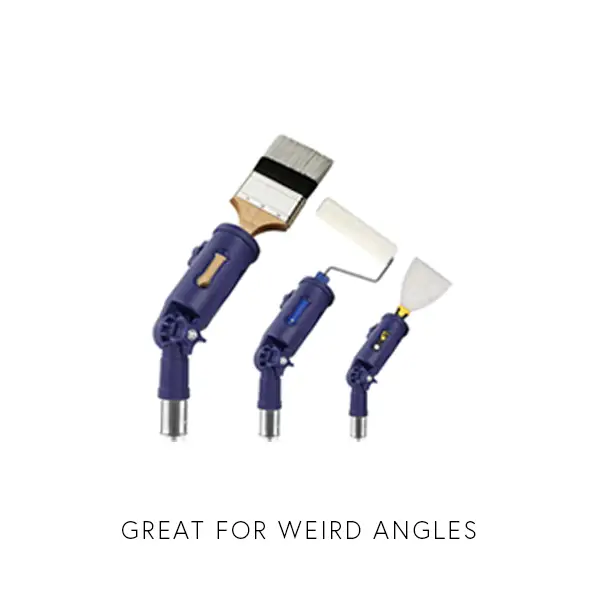
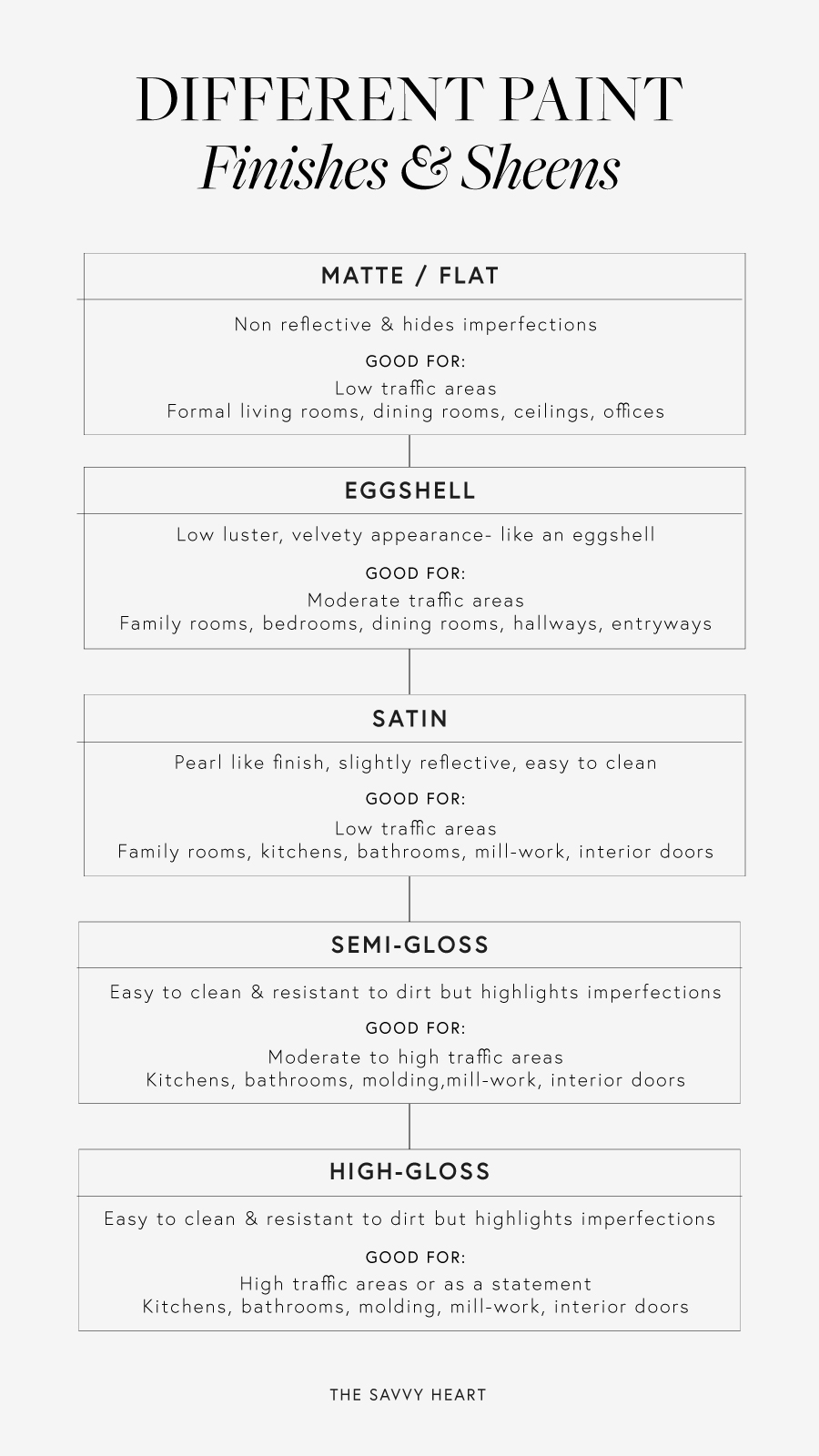
I hope this post helped you out the next time you think about painting some interior walls in your home!
And, of course…these are just guidelines…design is all about having fun, so use your imagination! Let me know what you thought about this post and what paint finish is your favorite in the comments below!
Until next time,
Cheers!
post sin tecnicismos y fácil lectura, así da gusto leet, gracias
admin.https://www.sofasmodernos.es/